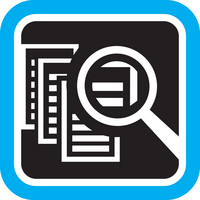 One of the biggest hurdles that many individuals and families face on the path to financial independence is digging out from credit card debt. It doesn’t take long for the balances on multiple credit cards to climb to the point where just the interest charges can amount to several hundred dollars per month. When the first few hundred dollars you pay each month do nothing to reduce your indebtedness, it’s time to come up with a plan to reduce that credit card debt.
One of the biggest hurdles that many individuals and families face on the path to financial independence is digging out from credit card debt. It doesn’t take long for the balances on multiple credit cards to climb to the point where just the interest charges can amount to several hundred dollars per month. When the first few hundred dollars you pay each month do nothing to reduce your indebtedness, it’s time to come up with a plan to reduce that credit card debt.
While it’s generally not difficult to come up with a plan to lower the credit card balances, it’s sometimes a challenge to stick to that plan.
Here is some credit card advice for getting a plan in place, and making sure that the plan is followed.
Figure Out Where You Are Now. For many people the hardest step to reducing credit card debt is the first one; figuring out exactly where they are now. That’s not to say that it’s actually difficult to sit down and add up the balances of your various credit cards – instead it’s that if someone has been living in denial of their indebtedness, seeing an accurate number can be a harsh wake-up call. When you make this calculation, make sure to note the interest rate for each credit card on which you currently pay a balance.
Call Your Credit Card Companies. The next step in the plan to reduce credit card debt is to try to reduce the amounts you pay each month in interest fees. The quickest way to do this is to call each company and simply request a lower interest rate. If you’ve had a good repayment history, then you might expect to get a positive response from a few of them.
Prioritize Your Repayments. While you could start paying down more on the balances of each of your cards evenly, there are other techniques which might speed repayment. For most, the best technique is to focus on paying down the balance on your highest interest credit card. Simply pay the minimum amount on all your other cards (and make sure to do so on time, every month), and put all your effort and available repayment funds towards the highest interest rate credit card. Once the balance is eliminated, go to the next highest interest rate card and repeat the process. This technique is generally the best from a purely financial perspective, but other people have used another technique to help keep them on track. This technique directs you to pay off the balance on your lowest balance credit card. This way you can quickly have one credit card completely paid off, which can give a sense of accomplishment that helps you stick to your repayment plan.
Spend Less. In order to make sure that you have the most funds available to reducing your credit card debt, it’s important that you begin to learn new habits. The most important habit is to spend less each month. It’s generally much easier to reduce your expenditures than it is to try to increase your income, so focus on ways to reduce your expenses and the credit card balances will come down more quickly.
If your current credit card balances are high, don’t expect that any plan will help you pay them off in a month or two. But as long as you are ready to put forth the time and effort to reduce your credit card debt, you’ll eventually succeed.
 One of the biggest hurdles that many individuals and families face on the path to financial independence is digging out from credit card debt. It doesn’t take long for the balances on multiple credit cards to climb to the point where just the interest charges can amount to several hundred dollars per month. When the first few hundred dollars you pay each month do nothing to reduce your indebtedness, it’s time to come up with a plan to reduce that credit card debt.
One of the biggest hurdles that many individuals and families face on the path to financial independence is digging out from credit card debt. It doesn’t take long for the balances on multiple credit cards to climb to the point where just the interest charges can amount to several hundred dollars per month. When the first few hundred dollars you pay each month do nothing to reduce your indebtedness, it’s time to come up with a plan to reduce that credit card debt.
